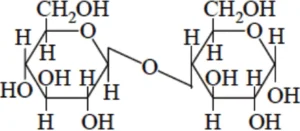Assertion Reason Chemistry Chapter 10 Biomolecules
Questions of Assertion Reason of Chemistry Chapter 10 Biomolecules CBSE Class 12 are very simple to understand as this chapter deals with Biomolecules. To solve assertion reason type questions of Chemistry, a deeper understanding of concept about Carbohydrates, Proteins, Enzymes, Vitamins, Nucleic Acids and Hormones is required. In order to help the student in solving Assertion Reason type of questions, detailed process is explained.
How to solve Assertion Reason Type Questions?
In Assertion-Reason type of question, two statements are given, first is Assertion and second is called Reason. Student must have to think critically about both the statements in Assertion Reason Questions, since it combines multiple choice questions and true/false type of questions which requires a higher level of understanding.
How many types are there of Assertion Reason Type Questions?
Assertion-Reason type of questions can be asked either with four MCQ options or with five MCQ options. First four options are same in both the cases only one more options is being provided i.e. last one. One extra option increases the difficulty level of the questions.
In assertion reason type of questions, all 4 or 5 options are same for each question, which are as:
(a) Both assertion (A) and reason (R) are true and reason (R) is the correct explanation of assertion (A).
(b) Both assertion (A) and reason (R) are true but reason (R) is not the correct explanation of assertion (A).
(c) Assertion (A) is true but reason (R) is false.
(d) Assertion (A) is false but reason (R) is true.
(e) Both Assertion and Reason are false.
Then a question haunts in every student’s mind, which option is correct and when?
This can be understood clearly with the following table:
| Assertion (A) | Reason (R) | MCQ Options (Fixed for all questions) |
|---|---|---|
| If True | True | (a) Both assertion (A) and reason (R) are true and reason (R) is the correct explanation of assertion (A). |
| If True | True | (b) Both assertion (A) and reason (R) are true but reason (R) is not the correct explanation of assertion (A). |
| If True | False | (c) Assertion (A) is true but reason (R) is false. |
| If False | True | (d) Assertion (A) is false but reason (R) is true. |
| If False | False | (e) Both Assertion and Reason are false. |
Now, lets practice some Assertion Reason Questions of Chemistry: Chapter 10 Biomolecules
Read instructions carefully before answering the questions.
For question given below, two statements are given- one labelled Assertion (A) and the other labelled Reason (R). Select the correct answer to these questions from the codes (a), (b), (c) and (d) as given below:
(a) Both A and R are true and R is correct explanation of the assertion.
(b) Both A and R are true but R is not the correct explanation of the assertion.
(c) A is true but R is false.
(d) A is false but R is true.
Question.1.
Assertion: D(+)– Glucose is dextrorotatory in nature.
Reason: ‘D’ represents its dextrorotatory nature.
Ans.1. (c)
Assertion is correct but Reason is incorrect.
Question.2.
Assertion: Sucrose is called an invert sugar.
Reason: On hydrolysis, sucrose bring the change in the sign of rotation from dextro(+) to laevo(–).
Ans.2. (a)
The hydrolysis of sucrose brings about a change in the sign of rotation from dextro (+) to laevo (–) and the product is named as invert sugar.
Question.3.
Assertion: β-glycosidic linkage is present in maltose.
Ans.3. (d)
Assertion and Reason are incorrect.
Question.4.
Assertion: At isoelectric point, the amino group does not migrate under the influence of electric field.
Reason: At isoelectric point, amino acid exists as a zwitterion.
Ans.4. (a)
Both Assertion and Reason are correct and the Reason is a correct explanation of the Assertion.
Question.5.
Assertion: Vitamin D cannot be stored in our body
Reason: Vitamin D is fat soluble vitamin and is excreted from the body in urine.
Ans.5. (d)
Vitamin D is a fat soluble vitamin and can be stored in the body since it is not excreted out of the body.



